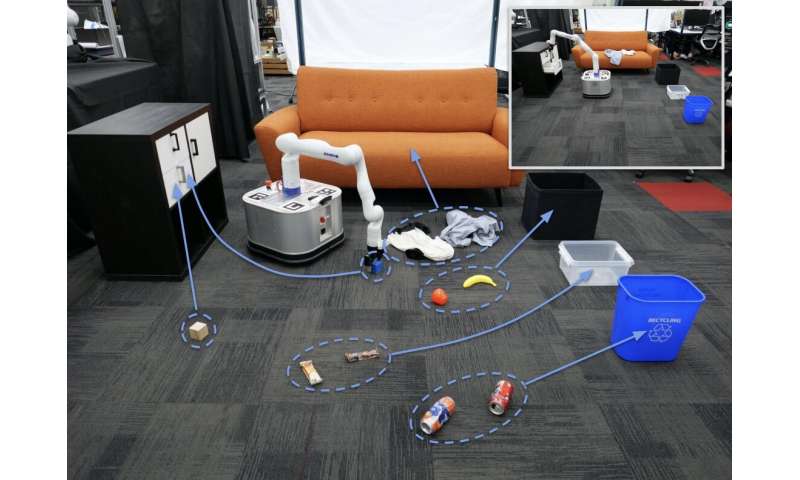Best of Last Week—Lingering effects of Neanderthal DNA, teaching robots to clean, a cure for high blood pressure

It was an interesting week for the biological sciences, as a team of botanists at the Chinese Academy of Agricultural Sciences reported that wine grapes have a high deleterious genetic burden. Using machine learning, they found evidence for a single domestication event of a grapevine going back more than 2,000 years. Also, a team with members from across the U.S. found lingering effects of Neanderthal DNA in modern humans, such as impacts on the immune and metabolic systems, and also development. And a team at Harvard University's Department of Earth & Planetary Sciences and the Origins of Life Initiative developed two models to create a synthetic species without biochemistry while operating according to Darwinian evolutionary principles.
In technology news, a team of AI researchers at TU Delft and the Swiss technical university EPFL used ChatGPT to design a useful robot capable of harvesting tomatoes. And a team of chemical engineers at Umeå University developed a novel electrolysis method that may soon lead to the production of cheap hydrogen—a method that still uses hydrogen and water. A combined team of roboticists from Princeton University and Stanford University found a way to teach robots to tidy up a living space based on user preferences. And a team with members from across China demonstrated a modular, continuous robot based on origami-folded tubes.
In other news, a team of medical scientists at the University of Queensland found that many viruses, including SARS-CoV-2 can, at times, instigate activity in the brain, leading to cells fusing together, which can cause chronic neurological problems. Also, a team of anthropologists, evolutionists and biological scientists from University College London explored the evolutionary origins and advantages of masturbation among members of the animal kingdom and found that in many cases, it serves a useful purpose. And finally, an international team of medical scientists found the cause of a common type of high blood pressure, and also a cure. They found it originated in a tiny benign nodule.
© 2023 Science X Network